If you or someone you care about got shot right this moment, do you have a trauma kit handy?
Around 6 in 7 victims shot with handguns survive their wounds in the USA. Surviving a gunshot wound or other severe trauma often depends on how quickly care is received and its quality.
GSW (Gunshot Wound) Trauma Kits are primarily concerned with:
- controlling hemorrhage
- maintaining an airway
- keeping the patient breathing
- preventing shock
- protecting caregivers
Principle Types of Survival Trauma Kits
Isn’t there one type of trauma kit that a survivalist should carry?
The short answer is, “No.” It is essential to have at least a couple of different sizes of trauma kits so you can have the right resources you need where and when you need them.
- Mini EDC Trauma Kit
Anytime you carry a firearm, you should also carry a trauma kit. Unless you have one that can slip into a pocket as a concealed carry handgun, chances are it will get left behind. This type of kit isn’t ideal for treating a gunshot wound but contains the very basics. Although, I have had to treat gunshot wounds with a lot less than is in the example in the picture below. The patient’s injury was not immediately life-threatening, and I was able to improvise what was needed. It could have been much worse.
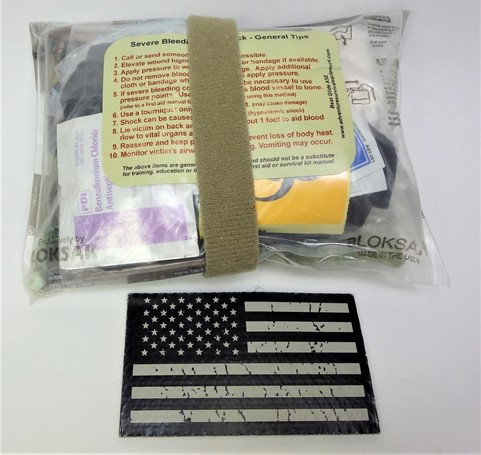
- Trauma Kit for Overt Carry
These are the trauma kits you’ve seen military personnel and survivalists carrying on their load-bearing equipment. When there is an above-average chance that you might get shot, this is what you carry. The idea here is that everyone brings their own and is treated using the supplies they have. That way, you won’t run out of supplies to treat someone in your group.
- Mass Casualty Kit
This kit is designed to get lifesaving trauma supplies into the hands of those treating victims of mass casualty incidents. This type of kit is a bag full of smaller “throw kits” that can be distributed where they are most needed. These kits are stored in fixed sites and vehicles.
- Vehicle Combat Trauma Kit
The increased carrying capacity of a vehicle makes it possible to carry a larger combat trauma kit with a folding littler and more medical supplies than you could take with you.
- Medical Specialty Kits
If you are a medical professional or have sought advanced medical training, you need to have a trauma kit that includes the tools you need to provide adequate care. Mutual Assistance Groups often include members with specialized medical training. These aren’t small trauma kits designed for EDC but are designed for roles such as Combat Lifesaver, Combat Medic, EMT, or WEMT. These are another kind of kit. You might store larger kits like these in fixed sites or bring them along if you are forced to bug out, but they are beyond the scope of this article.
Survival Trauma Kit Components
Here we will examine pouches and contents to consider including in a survival trauma kit.
- Survival Trauma Kit Pouches
A trauma kit needs a pouch, which can be as simple as the Loksak above for a small EDC kit. For kits intended for overt carry, a suitable bag is needed. For this role, I prefer a flat pouch with a removable insert like the SO Tech Flat IFAK in the picture below.
The reason for this is that boxy pouches are very uncomfortable if they get between you and a car seat or if you lay on top of them when assuming the prone position behind cover. They can also snag. Flat pouches are also easier to fit into other bags. In the end, you’ll have to decide what works for you. Some guys like to put a fat IFAK where they can use it as a ledge to prop up the arm supporting their weapon.
I also like a removable insert, and this one includes a shock cord lanyard so I can hang the insert around my neck while working with it. This is nice because it helps prevent you from dropping or losing medical gear if you must deal with a threat while rendering aid to yourself or another.
- Separate Tourniquet Pouch
When carrying overt load-bearing equipment, I like to take a tourniquet upfront on my plate carrier where it’s easily accessible. TQ carriers also make it possible to have more than one tourniquet and make sure that someone else can find them easily, which is vital since you may be in shock or unconscious if you need one.
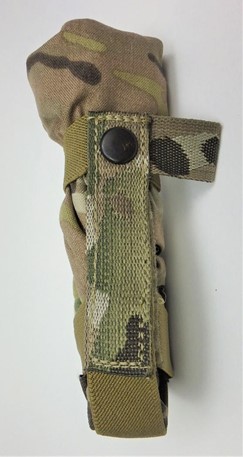
Basic Survival Trauma Kit Contents
Here is some gear to seriously consider including in a blowout kit.
- Tourniquet – Tourniquets save lives at risk of exsanguination do wounds to extremities. Survivalists have many choices of tourniquets, and much has been written about them. Most of them fill a specific niche. Sometimes size and weight constraints or the form-factor of the kit will determine the best candidate. Purpose-designed tourniquets are generally more effective and easier for untrained or poorly-trained people to apply than improvised tourniquets. I recommend carrying a tourniquet as part of your EDC and training yourself, your family, and members of any Mutual Assistance Groups you belong to use the model you choose to carry.
- Trauma Bandage – Two of the more effective trauma dressings I have tried are the Israeli Dressing and the OALES Modular Trauma Dressing. There are many other good dressings made by companies such as North American Medical and H&H. Look for a dressing that includes compression to keep pressure on the wound, which is crucial to stop bleeding.
- Chest Seals – Chest seals are applied to penetrating chest injuries which can cause the pleural space surrounding the lungs to fill with fluid. This type of injury can result in a collapsed lung. The chest seal patches the puncture with an impermeable barrier. Gauze impregnated with petroleum jelly is also used in this role, is far cheaper, and takes up precious little space in small kits. Instead, larger chest seals are easier to apply quickly under stress.
- Hemostatic Gauze – This category includes gauze impregnated with hemostatic agents such as QuikClot, Chitosan, and Celox, which cause rapid clotting. These products are revolutionary and have saved many lives. The advantage of impregnated gauze over powders is that powders can be challenging to work with within extreme conditions. Whereas powder can spill out onto the ground or get carried into your eyes by the wind, impregnated gauze isn’t as susceptible to these problems.
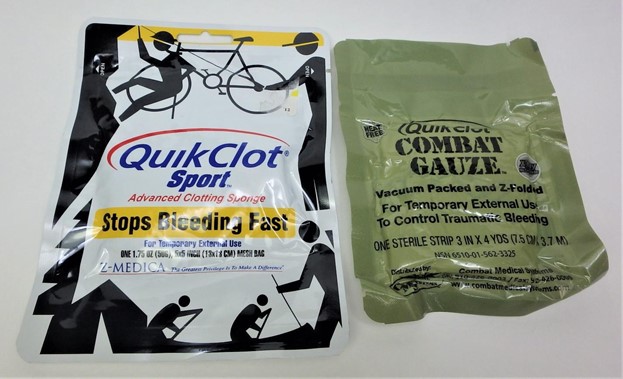
- Nasopharyngeal Airway & Lubricant – Airway, bleeding, and shock are the three killers, and establishing an airway is a priority in cases where it has been compromised. Any time trauma or swelling closes off a patient’s airway, the patient is in grave danger and will not likely make it to the hospital. The nasopharyngeal airway is the most accessible type of airway to use and is lubricated and inserted in a nostril. If one nostril is larger than the other, use the larger one.
- 2″ 3M Durapore Medical Tape – 2″ tape is wide enough to reinforce chest seals and adheres much better than 1″ tape. Don’t mess around with cheap medical tape or paper tape for trauma applications.
- Trauma Shears – I use 5.5″ trauma shears instead of 7.5″ shears to save space in trauma kits for carrying, but the choice is yours.
- Nitrile Gloves – Light-colored gloves have an advantage in that you can see blood on them when conducting triage by touch, so I prefer them for this reason.
- Benzalkonium Chloride Wipes and a Plastic Bag with a Biohazard Sticker – Bandages soaked in blood or other body fluids present a health hazard. Including these items takes up very little room and assists in cleanup and safety.
Additional Contents to Consider
A long list of equipment could be considered for large or specialty trauma kits, depending on the kit and user training purpose.
- Rx Pain Medication – Talk to a doctor about this. Military medics carry Fentanyl tablets to treat the severe pain that can accompany gunshot wounds, but you’ll need to be prescribed anything you take. The benefit is that it could keep the patient from going into shock and reduce agonizing pain. The downside is that it could kill the patient if misused.
- Chest Darts – Needle decompression is used to reduce tension pneumothorax, which can accompany penetrating chest injuries. You should attend training for this procedure if you’re going to carry this and I recommend that you do.
- Camo-Form Tape – Some Air Force survival kits include a flat roll of this self-adherent tape. It can be used like CoBan dressings; only it stores a lot better in trauma kits. Since pressure makes CoBan stick to itself, it becomes useless if it gets compressed or crushed and is best stored in drawers or complicated cases.
- Medical Duct Tape – This is a medical tape with many duct tape attributes but uses adhesive designed for human skin use. I recommend carrying this instead of duct tape for those of you who take it for medical use. Some patients react severely enough to duct tape that I have seen do more harm than good in some cases.
- Cravats – Cravats are one of the most multi-use bandages included in a first aid kit and bandanas, and similar accessories can be used in this role.
- Blackheart Cravat – This old school medical cravat hasn’t changed much over the last century and hasn’t lost any utility. It’s just two safety pins and an olive drab cravat, but it does include some examples of how to apply it on the packaging. Regulation 37 x 37 x52 inches.
- CamoVat Cravat – Issued in Air Force survival kits, this product is the camouflage, antimicrobial, water-repellant version of the only standby.
- Dry Sterile Burn Dressing Super Combat Cravat– This cravat is what it says and comes vacuum-packed flat to fit easily in kits. It is a sterile, non-adherent dressing that makes it more multi-use, earning it a place in my trauma kit. It is also a little larger than most cravats at 45 x 45 x 63 inches.
- Primed Gauze – Primed gauze is 4.1 yards of 4.5″ gauze vacuum-packed into a small, flat block and is fantastic to have on hand. A SWAT-T medical device, tape, and primed gauze can dress a tremendous variety of injuries and help cases where the patient has been shot multiple times.
- Stump Dressings or Blast Bandages – These are trauma dressings, only in larger sizes to treat blast wounds that cover large areas and amputations and should be included in large trauma kits.
- Emergency Blanket – Some blankets should be included in larger kits to prevent the patient from going into shock.
- Petrolatum Gauze – An occlusive dressing to seal penetrating injuries at a tiny fraction of the price of a chest seal. Please don’t use them in trauma treatment of burns as they can seal in heat, causing additional tissue damage. Only after burns have thoroughly cooled can petroleum products be safely applied.
- Treatment Cheat Sheet – I carry a triage/treatment cheat sheet in my wallet to prompt me with lifesaving information that is hard to remember, especially under the stress that accompanies a GSW.
- Triage Tags – Should be included in mass casualty kits to prioritize patients for transport according to the severity of their injuries.
- Sharpie Mini Marker – When a tourniquet is applied to a patient, it is vitally important to note “TQ” and the time it was used. This is so vitally important that healthcare professionals are often trained to write this on the patient’s forehead with a marker so the fact cannot be missed.
What’s Not in Blowout Kits that I Carry with Me?
I would be glad to have a lot more gear, but you won’t find it in my small trauma kits because they treat injuries that aren’t life-threatening, and the added bulk could get a small kit left behind.
The list includes eyewash, eye particle remover, ointments, decontamination wipes for irritant sprays, burn cream, cold packs, and more. These items are certainly appropriate to include in larger kits designed to treat more than just life-threatening trauma but would take up too much room in a small trauma kit.
I hope this article has given you a few ideas to improve the gear you carry and motivate more people to take appropriately-sized trauma kits for EDC and overt carry and perhaps keep something a little comprehensive at home, work, and vehicles. I’d love to hear what you carry in the comments.
>>> GET THIS BOOK TO DISCOVER MORE <<<


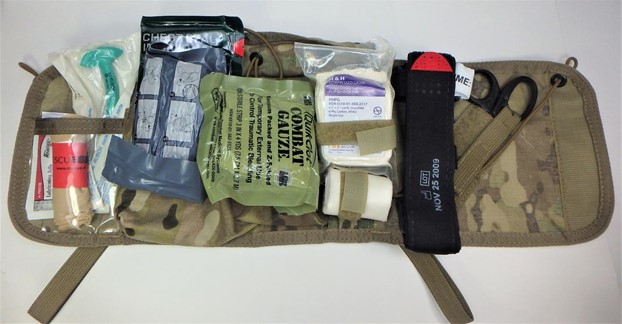

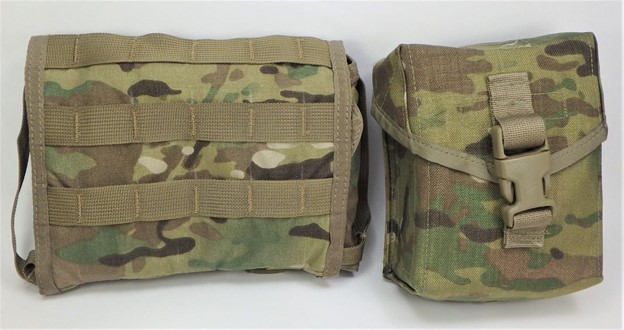
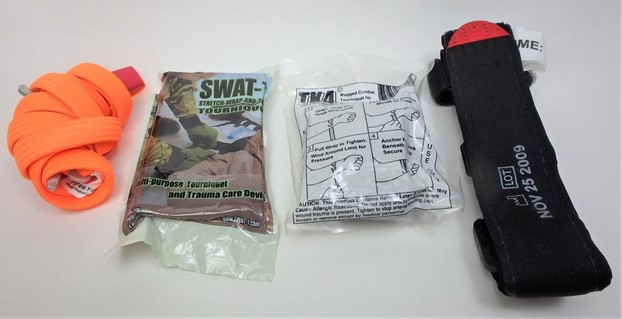
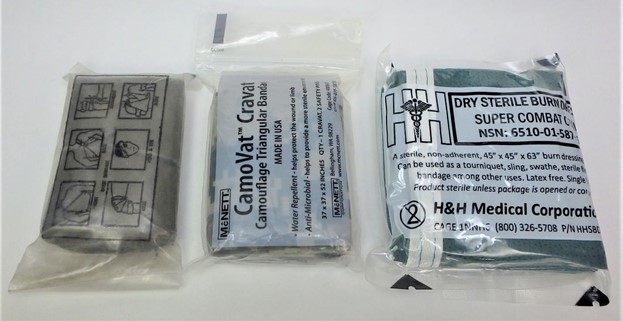
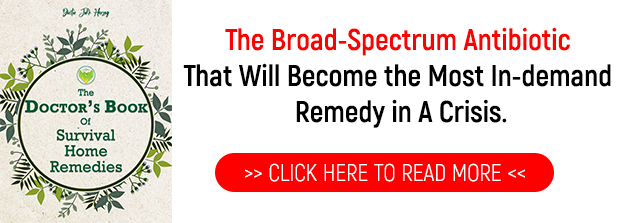
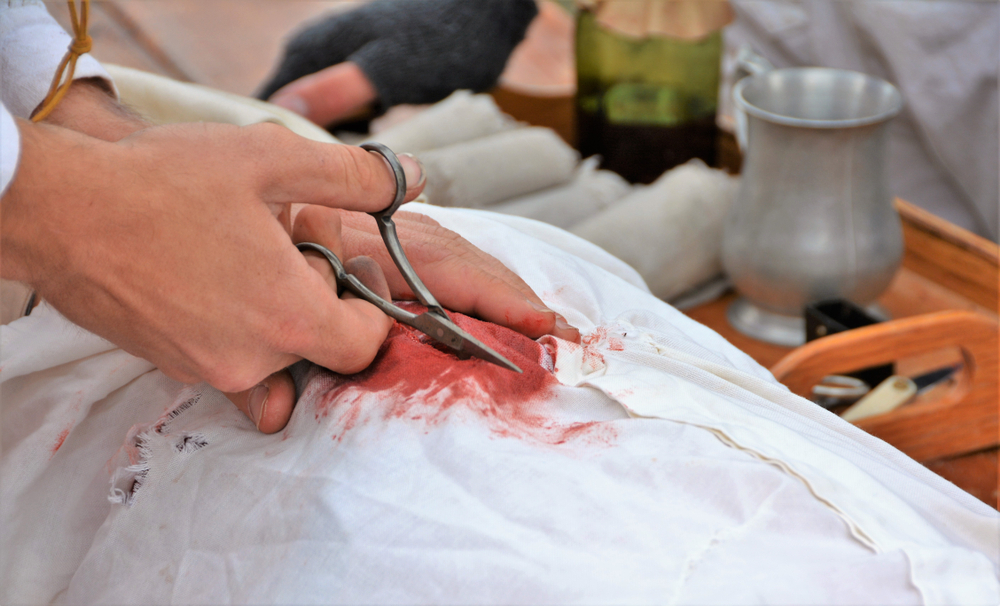
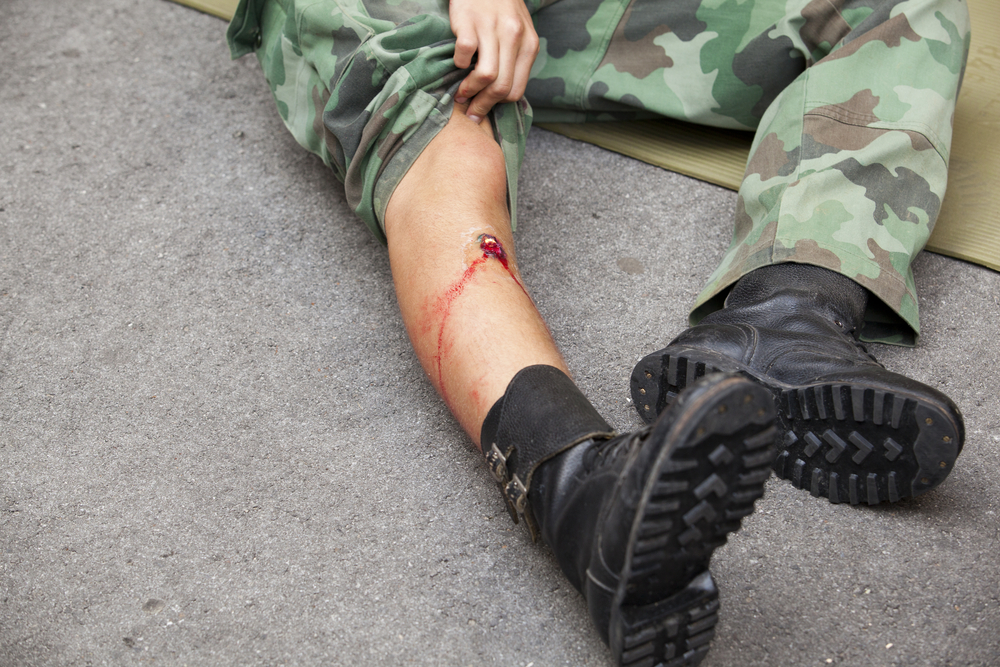
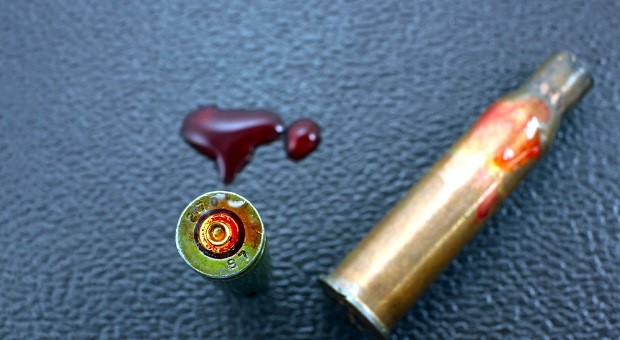

Nelson Mckinnon | April 15, 2021
|
Add cayenne pepper to your kit. It will coagulate blood in bleeding wound. Sprinkle on then tape wound closed. Stings but works. Works like cells strpps. I can not get them here inCanada. Hope to get some in N.Y. State when boarder opens.